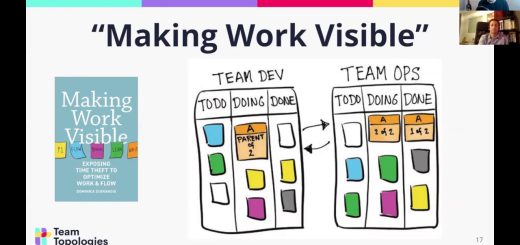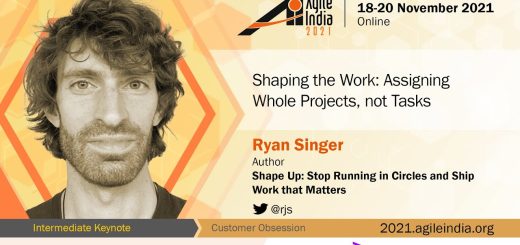Digital Transformation Starts with IT, Not the Enterprise
What has the last year taught us? More than anything, we can likely come together to accomplish seemingly unachievable goals to serve the greater good for each of our organizations and those served by them. Primary among these advancements is the move toward a digitally transformed environment. Some of the most apparent digital transformations include faster connectivity, increased digital investment, chatbots, and even AR and similar technologies. The reasons for these investments are straightforward, yet business leaders continue to grapple with what they can control when it comes to technological advancement to leverage new technologies while remaining relevant in the digital age. Where does digital transformation fit in an enterprise when the enterprise is taken in part rather than in whole when trying to accomplish the most good most quickly?
Author: Ruben Franzen, president of TOPdesk US, https://www.topdesk.com/
The hunt for an enterprise fix-it-all solution has been on par with the previous generation’s searches for the fountain of youth. Unfortunately, neither exists despite previously popular claims to the contrary. Just because some people say it’s so or want it to be so doesn’t make it so. Dragging industries and organizations into “enterprise” solutions that are not right for them or fit doesn’t speak to deficiencies within the organization but more about the solution being sold.
While many think ESM is an essential part of an organization’s digital transformation, these efforts often must start to the left of this in IT service management. Instead, ITSM leads to a practical path towards service delivery automation needed to support employees regardless of their location, work whereabouts, or required roles and responsibilities.
In addition, the provisioning and delivery of services to users is no longer the job of IT only. As employees and departments within organizations continue to demand self-service models, decision-makers are joining hands in deciding on the best IT tools to impact the service experience across their organization positively and ultimately towards the bottom line.
Yet, as the push for “enterprise services” continues, digital services are where acceleration and transformation begin. Leaders attempting to bypass this foundational principle will likely skin some knees, falter along the way, or try to build their house upon proverbial sand. An enterprise all-in approach that circumvents a task-first tact may lead to severe disruption as they attempt to move ahead.

ESM shouldn’t circumnavigate ITSM
“ESM is a requirement for IT and business teams servicing employees collaboratively in the next normal,” says the research firm, Research In Action. “Connectivity, everything-as-a-service-thinking, all the time from anywhere secure access to applications and data, global and local collaboration needs and the ability for a more connected service experience for employees are creating big challenges within organizations today.”
The reasons for this, the firm says, are many, including managing the network of remote or in-office workers, secure and reliable connectivity, data security restrictions, regulatory compliance adherence, internal governance, and the management of different devices and their usage must be managed and orchestrated.
However, that’s wholly the point for why ITSM is important now. For the organizations moving to the digital transformation frontier, ITSM lets them focus on establishing solid IT workflows, integrating business teams (HR, facilities, IT, finance, legal), and coordinating workflows and streams to ensure the most outstanding possible productivity, collaboration, and connection.
Enterprise solutions can be launched on the shoulders of existing ITSM initiatives, but not the other way around. ITSM is the foundation for enterprise solutions, not the other way around. But not technology for technology’s sake.
Our future workplaces, where employees might work remotely, will need to be managed and organized to collaborate and work productively and efficiently while serving customers without interruptions.
Digital transformation starts with ITSM
ITSM enhances employees’ interactions with different business units to match their experience as consumers in the digital economy. Those adopting automated service management are linking employees, business functions, and services. In terms of digital transformation, they are equipping their users to respond to business needs from anywhere.
The provisioning and delivery of services starts and grows from the IT service center. Still, connectivity, everything-as-a-service-thinking, and a more connected service experience for employees create challenges for organizations today. These challenges — managing the network of remote or in-office workers, secure and reliable connectivity, data security restrictions, compliance adherence, governance, and the management of different devices and their usage — must be managed and orchestrated.
While ITSM is about IT workflows, it is foundational to any advanced enterprise-wide effort to develop joint value streams. Automating processes is fundamental to ITSM, and more advancements are vital to leveraging other developments coming forth, including AI and machine learning. Automated intelligence with context means adapting to internal and external stimuli applied for the most significant benefit and value.
However, IT automation solutions are necessary for a modern digital operating model and are foundational for any transformation to reduce toil and decrease manual effort. IT automation also can enforce good practices to optimize digital service quality and speed of service delivery. While most large organization’s leaders say they are migrating to enterprise solutions to accomplish some of these automation goals. Digital transformation, however it occurs, is at the heart of this mission, no matter its size.
While many leaders in this space think ESM is the next essential organizational evolution, I’m adamant about the push toward digitalization in a more foundational manner for most, especially those grappling with the need to evolve past their home-grown and legacy solutions.
Digital transformation is more foundational to our efforts now than at any other time. Yet, these efforts start to the left of enterprise efforts and at least two steps left of enterprise service management in IT service management. ITSM leads to a practical path for service delivery automation needed to support employees independent of the employee’s location.
The provisioning and delivery of services is no longer an IT-only job. As employees and departments within organizations continue to demand self-service models, decision-makers are joining hands in working through the best IT tools to impact the service experience across their organization positively.
As the push for “enterprise services” continues, digital services are where the acceleration begins. Leaders not focused on providing modern digital services to their employees and partners will be left behind. Those attempting to bypass such foundational principles will likely skin some knees, falter along the way, and build their house upon the proverbial sand. An enterprise all-in approach that circumvents a task-first tact may lead to severe disruption as they attempt to move their organization’s service capabilities ahead.


